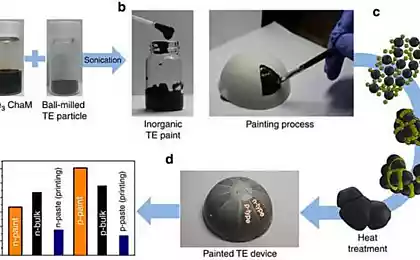421
New materials for future Green Tech devices

A new study shows porous substances can act as thermoelectric materials, pointing the way to engineering, their use in thermoelectric devices of the future.
In creating the technologies needed to capture heat, researchers around the world are trying to more efficiently use the thermoelectric materials. One of such promising materials is a substance full of tiny holes, ranging in size from microns (10-6 m) to nanometer (10-9 m). As explained by the National center for scientific research Democritus (Athens), Dimitris Niarchos: "Porous termoelectrice can play a significant role in improving termoelectrica as a viable alternative for conversion of the outgoing waste heat."
Heat passes through a material is via phonons, quantized units of vibration, which act as heat-carrying particles. When the phonon penetrate into the hole, it scatters and loses energy. Thus, the more porous the material, the lower the conductivity, and the better it is as thermoelectric material.
Team Niarchos studied thermal properties of four simple model structures of micro-nano porous materials. This analysis, according to the researchers, provides a rough plan for how to design such materials for thermoelectric devices.
The researchers found that the smaller the pores and the closer they are located in a substance, the lower its conductivity. Their calculations match data from other experiments. They also show that micro-nano porous materials can be several times better to convert heat into electricity than the material without pores.
The first model describes a material filled with holes of random sizes, from microns to nanometers in diameter. The second consists of several layers, where each layer contains pores of different sizes. The third material, which consists of three-dimensional cubic lattice of identical holes. The fourth – layered system where each layer contains a cubic lattice of identical holes. The size of the holes is different in each layer.
According to the results, the first and fourth models have lower thermal conductivity than the second. The third model has a lower conductivity than the fourth. But, as said Niarchos, the first model is the most realistic option. Because to create is almost impossible, due to the equal size of the pores. However, according to him, all analyzed models demonstrate the importance of porosity in thermoelectric materials.
Source: nauka24news.ru/
Psychologists smart phones are ruining communication
Scientists have learned to manipulate individual atoms






















